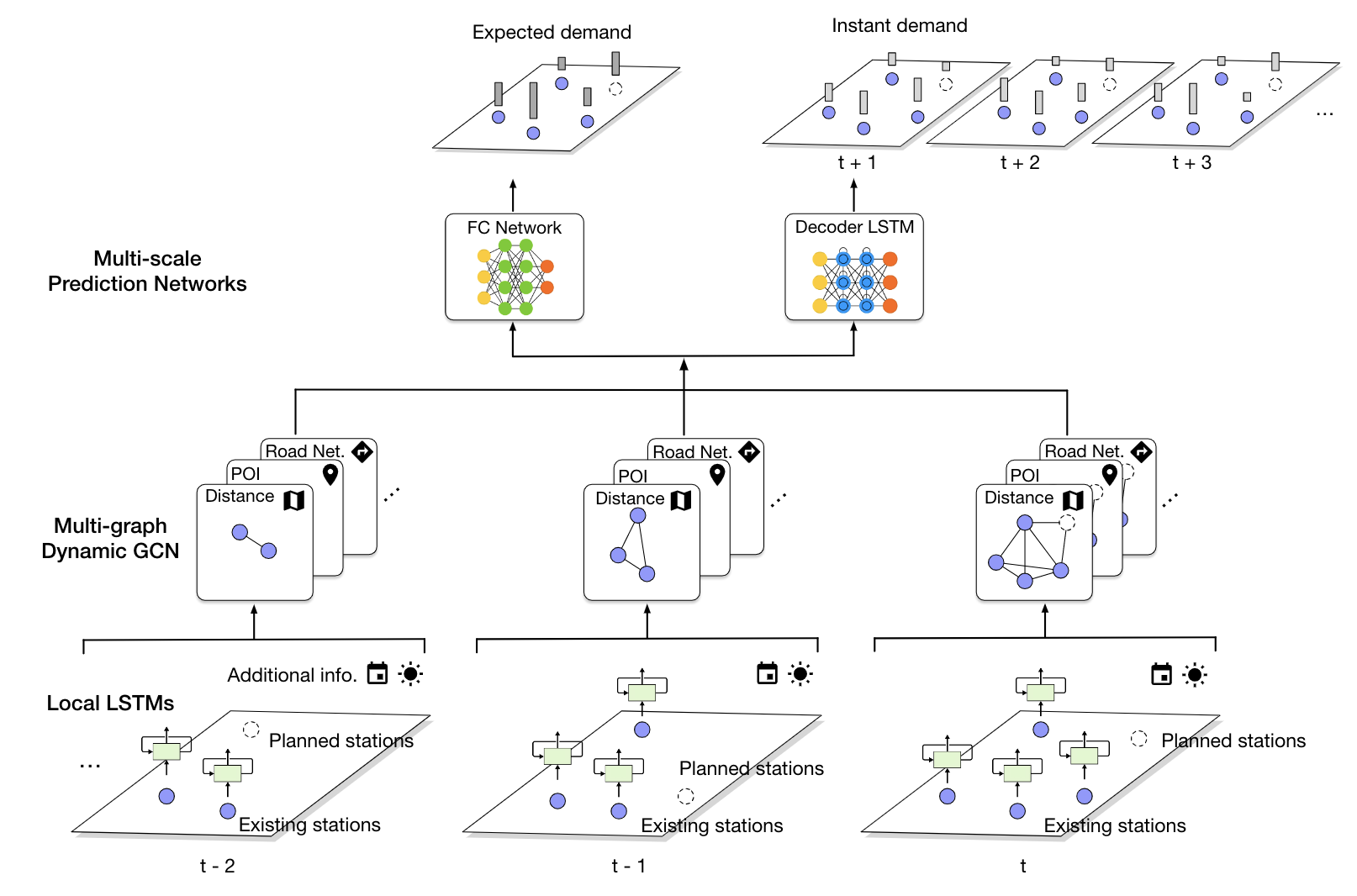Demand Forecasting using Graph-based Spatio-temporal Deep Learning

In urban systems, a key problem is how to predict the demand of the system across space and time. It is an essential ability to answer many “what-if” questions, for instance, if a new station were to be deployed in a mobility system to a particular location at a specific time, how popular it will be? And how an existing stations will perform in response to this?
This is particularly challenging if the system is highly dynamic, e.g. expanding its infrastructure. To address this, we developed a graph-based spatio-temporal learning framework, which uses two layers of encoders. The first layer, in the form of LSTMs, captures local temporal dependencies, e.g. the historical mobility at particular points and weather history. On top of that we use a graph convolutional neural network (GCN) to encode spatial correlations from various data modalities, such as POI and road network. Our model can also do multi-scale prediction, in that it can predict both long-term expected demand, and short-term instant demand over spatio-temporal domain, by plugging different final layers to the network.
For more details please see the following paper:
D3P: Data-driven Demand Prediction for Fast Expanding Electric Vehicle Sharing Systems.
Man Luo, Bowen Du, Konstantin Klemmer, Hongming Zhu, Hakan Ferhatosmanoglu, Hongkai Wen.
Proc. ACM Interact. Mob. Wearable Ubiquitous Technology (UbiComp). 4(1): 21:1-21:21, 2020.
